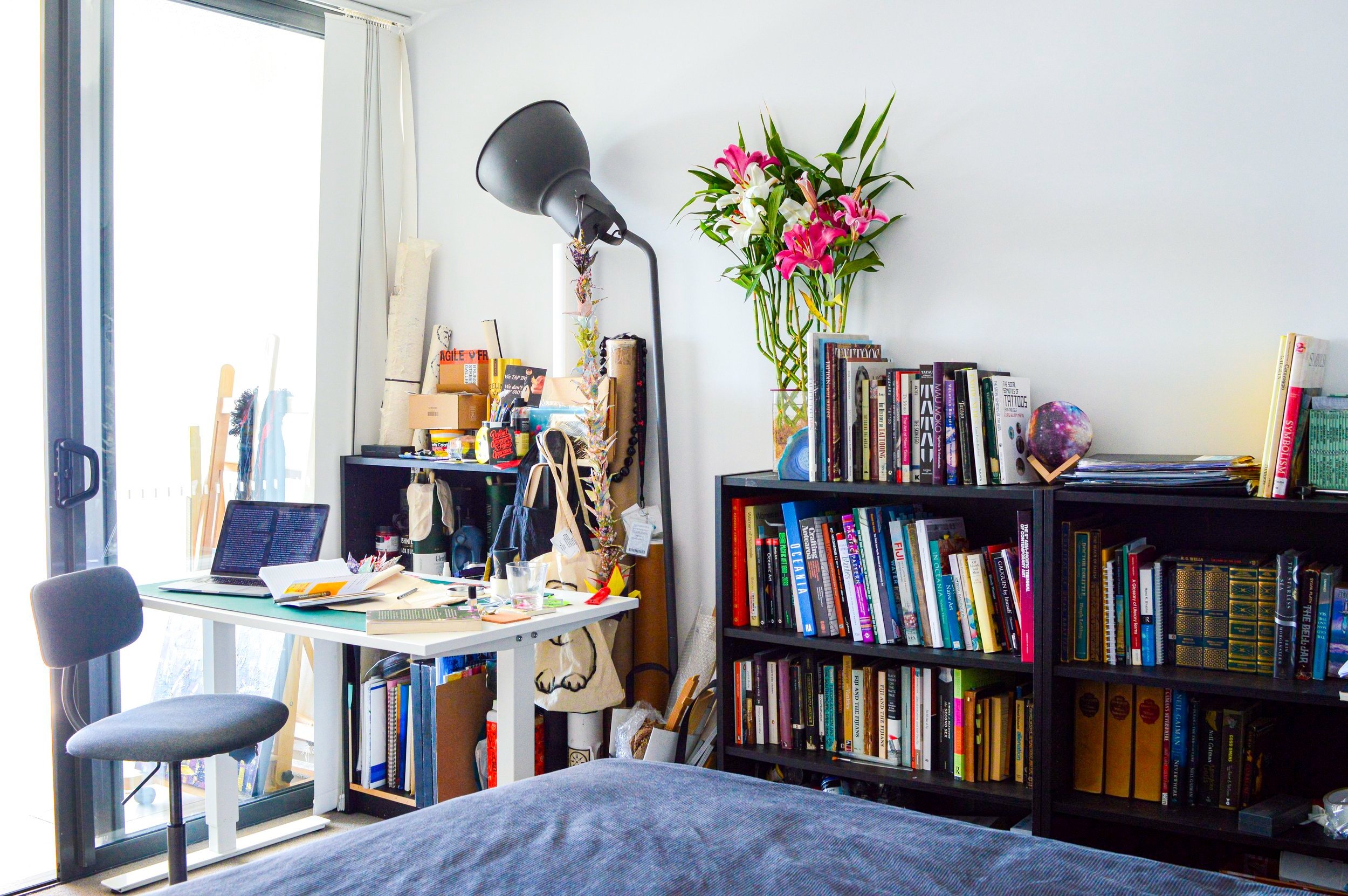
Dorell Ben
SummaryDorell Ben is a Gujarati-Rotuman woman from Fiji. Ben is currently pursuing a Ph.D. concerning the reawakening of women's cultural tattoo practices in Oceania. As part of this journey, they have come to find themselves immersed in Rotuman tattooing culture and its practice prior to its dormancy and have been seeking to realign themselves and other Rotumans with its visual language.
I am a daughter of the fạ’i and the trajva, forged on lands that have embroidered into my being the multitude of identities that is Oceania and our histories. I am a daughter of the diaspora, generationally displaced, misplaced, and outplaced. I am a liminal being who sits at a beach, neither of land nor sea.
I am Ben, sister, daughter, descendent.
Creative Process
As daughter of the fạ’i and the trajva, forged on lands that have embroidered into my being the multitude of identities that is Oceania and our histories, this Fale-ship has reminded me that home is not always just a place, but a practice.
One that embodies the nature of our thought, our song and dance, our visual language and the silence that falls through each shadow.
My place in this residency is a reminder that even small drops of water accumulate into oceans. I create in my own home, in my (dis)comfort, on the same table I scribble thoughts and navigate my own ignorance toward a phD.
To create is to enter a dreamscape, to thin the veil between the ‘Oroi and Ran Te Isi, to welcome possibilities and become enriched by these liminal spaces.
Creative Workspace
I create in a space that is home, and at the same time, not my home. My space is one of liminality, uncertainty and chaos. I have recently moved apartments, and my current workspace has retreated into my bedroom in a cosy corner, surprisingly just between spaces of rest and the balcony that overlooks an Australian suburb.
Final Works
An(3)Pō(Scene) explores the relationship between mankind and the environment. During this Fale-ship Residency, I expanded upon the original triptych to investigate various scenes of
the Anthropocene. An(3)Pō(Scene) explores “a dark scene in threes”: Past, a Present and a Future. Albeit, the three pieces are placed in a linear manner, temporally locating “past, present and a future” is entirely dependent upon its perceiver. Each piece is a conversation that has been had, is currently being had and is yet to be had. The Rotuman and Gujarati tattoo motifs express such possibilities. In a word, An(3)Pō(scene) is nuanced.
Such reflective nuances that intend to open prospects into deeper conversations are of course limited by my own possibilities. An(3)Pō(scene) sinuates that the smallest of ripples can create tsunamis. It is also within these small sizes that I found each cut, weave and paint that touched the rice paper reminded me of the fragile consequences that we as a collective human race make when it comes to the choices of our environment.
It is in this reflective turn that I invite audiences to have their own conversations of their place in the Anthropocene. In each woven space and time, where do they find their own places and identities? The challenge of one may seem like the easiest path for another, but the scenes of the An(3)Pō(scene) series tempts audiences to look beyond such divisive moments and see the holistic nature of our own (in)actions.
An(3)Pō(scene) is also a continuative series. Each triptych assumes a lifetime of its own, and like a legacy that accumulates a generational knowledge of all that has passed, is being passed, and is yet to pass, there is always room for it to expand and grow. In these current pieces, I intended to use materials that were already available to me: earthen dirt and soil to mix deep shades of brown, mixed with the haldi from the kitchen pantry, marked with the roughness of ash and charcoal fallen from burnt sage, bamboo and paper that once held a life before its purpose became blackened paint. I even used origami paper, raffia, and ribbon to weave its way in and out of rice paper, almost as if they were a dance, ebbing and flowing with each passing wave















Fale-ship Questionnaire
What are you currently studying?
I am currently doing my PhD in Arts and Humanities. My research focus is on the significance of our cultural tattoo practices in the contemporary in order to accumulate and share generational knowledge as a medicinal method to generational trauma and colonial legacies.
How important is it to showcase the lived experiences of Moana artists?
To re-create possibilities, I have had to tap into western archives and images, and draw from my Oceanic heritage and homeland to perceive the fa'i in our contemporary away from home. My research is one that is of practice, learning and unlearning. Through the fa'i, I am reminded that the ocean tethers our people to the oroi; that the vastness of the ocean separating our lands are the same as the spaces found between boldened tattoo lines connecting our identities, and sometimes between small spaces on foreign places. .
What were some highlights and challenges you came across during your residency?
During the residency, I have had to come to terms with these limitations, that my research may not yet have reached the pinnacle of all the likelihood there is to have on navigating the Anthropocene itself.
It is not that I am limited or insubstantial to the thought process of the Anthropocene, but rather, that I am but a drop of water in the grand ocean there is.
And it is within this understanding of such a restricted line of thought that I intended each triptychto be produced in a rough A5 size.





